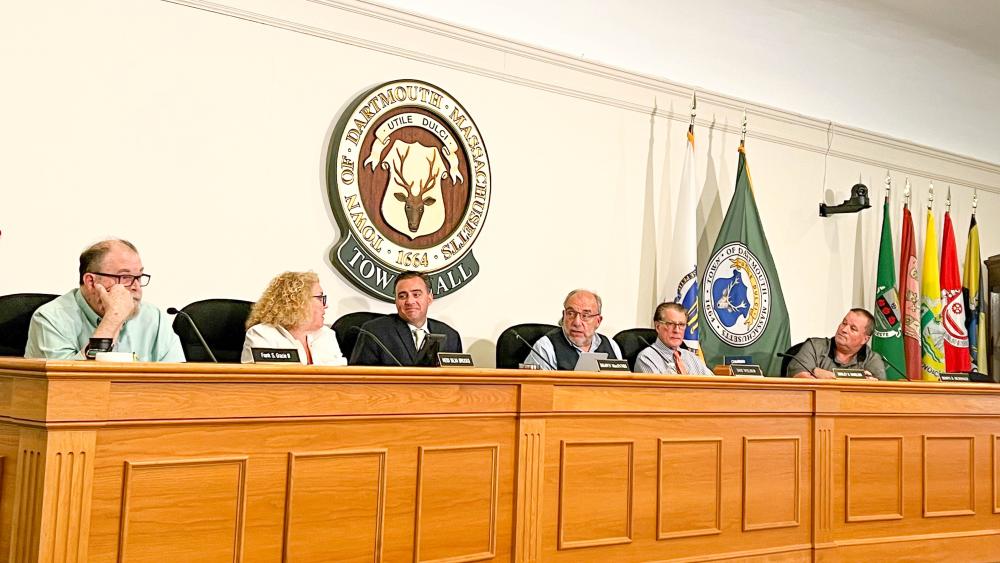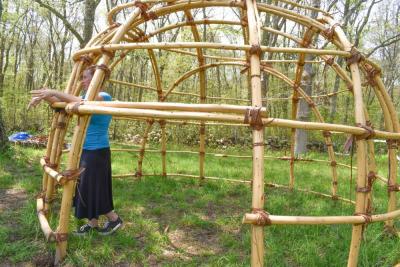Working on formation of new committee, town looks to honor indigenous history
Following last month’s decisions to reaffirm the Dartmouth High Indian name and logo, officials are now looking to find ways to honor Native American culture in the schools — and across town.
To do it, the town plans to create a new committee that would work to showcase all aspects of those historical ties possibly through land acknowledgements and displays in public buildings.
“I think this is precedent-setting,” Select Board Chair David Tatelbuam said at the board’s May 23 meeting. “Over the last 20 years, this thing took on a life of its own because it wasn’t a town-wide issue — it’s about time we make sure that it is.”
The formation of this committee is ultimately up to the School Committee, which is expected to discuss the matter at its June 6 meeting.
Tatelbaum, along with fellow Select Board member Heidi Brooks, would also like to see collaboration with the town’s Historical Commission in potentially setting up informational kiosks around Dartmouth, similar to the ones set up for the town’s 350th anniversary in 2014.
The kiosk project is currently being developed by School Committee Vice Chair Mary Waite.
“We could make something engaging for all age groups,” she said at a May 9 joint committee meeting. “There’s all sorts of ways we can work together.”
Another goal officials hope to tackle is to create guidelines surrounding use of the Indian symbol by outside groups such as the Dartmouth Youth Football League, along with potentially using the letter “D” as an alternate on uniforms.
“The logo has been used beyond the school and we need to talk about that,” Brooks said.
Although use of the logo may be part of its charge, this new committee would focus mostly on education opportunities outside of the schools.
All curriculum decisions would be made by the School Department, which is currently in communication with the Mashpee school system to learn how it added its local tribe’s history into the syllabus.
Currently, Native American history is primarily taught at the third grade level under the topic of “indigenous justice” in Dartmouth’s public schools.
While it could take some time to implement a new curriculum, Waite noted at the recent joint meeting that there are “natural extensions” within the state’s 2018 framework surrounding social studies.
For example, she said that kindergarteners, who have “family” as one of their topics, can have Wampanoag tradition and family structure added to their lessons. Waite added that the district has hired two new administrators who will “extend this work” as part of their roles.
Waite also highlighted some current ways in which students are learning about indigenous culture, including the creation of an artifact museum at the Quinn School.
“They are really starting this work in earnest,” she said.
Steps are also underway in other parts of town to showcase tribal history.
At Round the Bend Farm, there is now a traditional Wampanoag wetu house that was constructed by tribal member Annawon Weeden.
The house, which is made out of cedar logs tied together with bark, is expected to be completed some time later this year.
Along with the new structure, the farm plans to conduct workshops near the wetu and hold a pow-wow with tribal members during its September Open Farm Day.
“There’s a lot of demand, which is really cool,” said Desa VanLaarhoven, the farm’s executive director.
Tatelbaum said that all these efforts are important as the town moves forward.
He will next communicate the Select Board’s suggestions to School Committee Chair John Nunes.
“If we don’t do all those things, we’re no better than the Washington Redskins,” Tatelbaum said.













